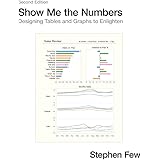
Enjoy fast, free delivery, exclusive deals, and award-winning movies & TV shows with Prime
Try Prime
and start saving today with fast, free delivery
Amazon Prime includes:
Fast, FREE Delivery is available to Prime members. To join, select "Try Amazon Prime and start saving today with Fast, FREE Delivery" below the Add to Cart button.
Amazon Prime members enjoy:- Cardmembers earn 5% Back at Amazon.com with a Prime Credit Card.
- Unlimited Free Two-Day Delivery
- Streaming of thousands of movies and TV shows with limited ads on Prime Video.
- A Kindle book to borrow for free each month - with no due dates
- Listen to over 2 million songs and hundreds of playlists
- Unlimited photo storage with anywhere access
Important: Your credit card will NOT be charged when you start your free trial or if you cancel during the trial period. If you're happy with Amazon Prime, do nothing. At the end of the free trial, your membership will automatically upgrade to a monthly membership.
Buy new:
-44% $25.31$25.31
Ships from: Amazon Sold by: Take-N-Go
Save with Used - Like New
$17.77$17.77
Ships from: Amazon Sold by: Joe nero

Download the free Kindle app and start reading Kindle books instantly on your smartphone, tablet, or computer - no Kindle device required.
Read instantly on your browser with Kindle for Web.
Using your mobile phone camera - scan the code below and download the Kindle app.

OK
Now You See It: Simple Visualization Techniques for Quantitative Analysis First Edition
There is a newer edition of this item:
Purchase options and add-ons
- ISBN-100970601980
- ISBN-13978-0970601988
- EditionFirst Edition
- PublisherAnalytics Press
- Publication dateApril 1, 2009
- LanguageEnglish
- Dimensions8.5 x 1.3 x 11 inches
- Print length329 pages
Books with Buzz
Discover the latest buzz-worthy books, from mysteries and romance to humor and nonfiction. Explore more
Frequently bought together

Customers who viewed this item also viewed
Editorial Reviews
About the Author
Product details
- Publisher : Analytics Press; First Edition (April 1, 2009)
- Language : English
- Hardcover : 329 pages
- ISBN-10 : 0970601980
- ISBN-13 : 978-0970601988
- Item Weight : 3.43 pounds
- Dimensions : 8.5 x 1.3 x 11 inches
- Best Sellers Rank: #294,444 in Books (See Top 100 in Books)
- #119 in Data Modeling & Design (Books)
- #247 in Statistics (Books)
- #785 in Decision-Making & Problem Solving
- Customer Reviews:
About the author

Stephen Few is on a mission to help organizations squeeze real value from the mounds of data that surround and threaten to bury them. Through his consultancy Perceptual Edge, founded in 2003, for many years Stephen taught simple, clear, and practical data visualization techniques for analyzing and presenting quantitative information. During this time he wrote four popular books about data visualization: "Show Me the Numbers: Designing Tables and Graphs to Enlighten," "Information Dashboard Design: Displaying Data for At-a-glance Monitoring," "Now You See It: Simple Visualization Techniques for Quantitative Analysis," and "Signal: Understanding What Matters in a World of Noise." His work now extends beyond data visualization to address other aspects of data and its use, resulting so far in his two most recent books: "Big Data, Big Dupe: A Little Book About a Big Bunch of Nonsense" and "The Data Loom: Weaving Understanding by Thinking Critically and Scientifically with Data." You can learn more about Stephen and his work at www.perceptualedge.com and at www.stephen-few.com.
Customer reviews
Customer Reviews, including Product Star Ratings help customers to learn more about the product and decide whether it is the right product for them.
To calculate the overall star rating and percentage breakdown by star, we don’t use a simple average. Instead, our system considers things like how recent a review is and if the reviewer bought the item on Amazon. It also analyzed reviews to verify trustworthiness.
Learn more how customers reviews work on AmazonReviews with images
-
Top reviews
Top reviews from the United States
There was a problem filtering reviews right now. Please try again later.
Creating charts is front and center as the focus of this book. "Show Me The Numbers" focused on charts and tables that could be built with simple tools such as Excel. Now You See It shows you the types of analysis you can do when you employee more advanced software such as Tableau and R. Some of the illustrations are really cool to look at and inspirational, even if I will never have the tools or time to prepare my own version of them.
"Now You See It" is broken up into 3 sections:
In Part 1 - Building Core Skills for Visual Analysis. Stephen Few covers the history of information visualization, the basics of analysis, and how we perceive data. There is some overlap with "Show Me The Numbers," but it's only one chapter, and not a deal breaker for me. I found the history of information visualization chapter interesting, and I imagine that in 50-100 years there are going to be new kinds of visualization methods available that we haven't even thought of yet.
In chapter 4, Analytical Interaction and Navigation, the author covers the role of good software in the data analysis process. He lists a few requirements that good software should have, and in many cases popular software such as Excel fall short. This is when you realize that learning another program like R could be useful. I almost feel like this chapter was written for software developers who are trying to create their own data analysis software, so if you're in that camp this is your book.
Part 2 - Honing Skills for Diverse Types of Visual Analysis, goes in depth with various types of charts that you can use to analyze your data. There is a chapter for each of the major types of visual analysis: Time Series, Ranking and Part-to-Whole, Deviation, Distribution, Correlation, and Multivariate.
Within each chapter Stephen Few shows you which types of patterns you should look for in your data and shows you what those patterns mean. He then shows you different ways of displaying the data, which can range from simple Excel charts to complex visualizations which could belong in a magazine. Finally he finishes each chapter with a list of best practices for analyzing the data, such as scaling chart intervals properly or using logarithmic scales to compare the percent change of data with different starting points (look at almost any stock market graph to see a logarithmic chart in action).
These chapters form nearly 50% of the book, and could be very useful reading to a student getting started with statistics, or anyone else who is not completely comfortable with numbers.
Part 3 - Further Thoughts and Hopes. The first chapter of the book opens with the history of information visualization, and the final chapters conclude with the author's thoughts on the future. As computing power gets stronger and the internet becomes more ubiquitous new innovations are in the works, and some of them are covered here.
Recommendation
I finished reading this book about a week ago, and at first I didn't think much of it. I already have a strong analytical background and didn't feel like I got much out of this book in terms of learning anything new. But after a few days I noticed that I starting thinking about problems differently - I started thinking about how I could present them in a visual manner, and I started sharing my simple charts with others.
I am finding that being able to throw together a chart quickly and effectively is extremely helpful for me and a great way to share results with coworkers. Despite having seen almost everything in this book before, reading it has got me thinking about using charts more to analyze data. It is also the kick I needed to start learning to do charts in SAS so I can expand my visualizations beyond what Excel can do.
The benefits of this book may not be immediately apparent like "Show Me The Numbers,", but if you give it some time to sink in I think you will start thinking of new ways to visualize your data. The charts shown by Few in this book are, for the most part, accessible to those of us in business, versus Edward Tufte who emphasizes charts created with design tools such as Adobe Illustrator. There are some examples shown in Tableau and Spotfire, which are both quite expensive. But there are also illustrations created in R, which is free. Of course if you are going to use those programs you have to learn to use them, but that will only increase your job appeal that much more.
If you work as a business analyst and are looking for practical ways to expand your knowledge and abilities, I highly recommend this book.
The first half of the book has a different focus than I expected. Few suggests that "...we've largely ignored the primary tool that makes information meaningful and useful: the human brain. While concentrating on the technologies, we've forgotten the human skills that are required to make sense of the data." He describes the human visual system, how it processes information, and the errors in perception it sometimes makes. His emphasis, however, is on the strengths of visual perception which he links to best practices in data analysis. One of the most useful parts of this section is in Chapter 2, where he lists and describes the "aptitudes and attitudes of effective analysts."
The book's second half describes and illustrates specific visual analysis techniques. It is rich with visual examples, comparisons of effective and ineffective displays, and series of related visualizations which show incremental steps of data transformation and analysis. Chapters are organized by specific data patterns and analytical techniques, describing how to look for the following six kinds of patterns:
- Time-series
- Ranking and part-to-whole relationships
- Deviations
- Distributions
- Correlations
- Patterns in multivariate data
Two final chapters present recommendations for developers of data analysis software and make predictions about future trends in visual data analysis.
The book is recommended for any researcher who works with large data sets. It is well-written, contains clear examples, and references recent research and the latest tools available for data analysis. Readers may also be interested in Few's Show Me the Numbers: Designing Tables and Graphs to Enlighten which discusses how to best describe patterns in data to nonresearchers.





















